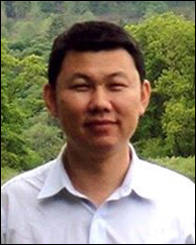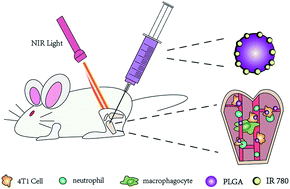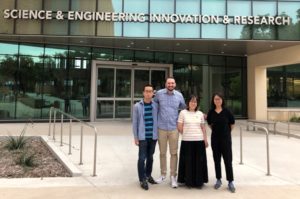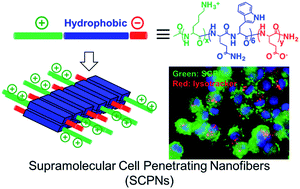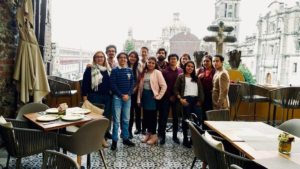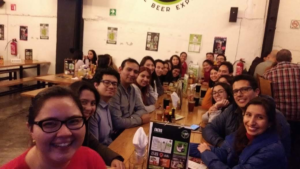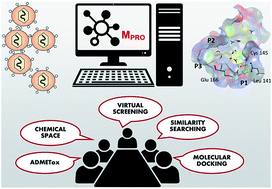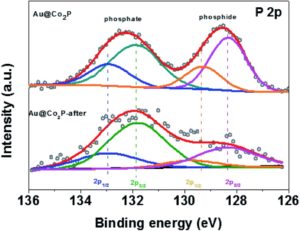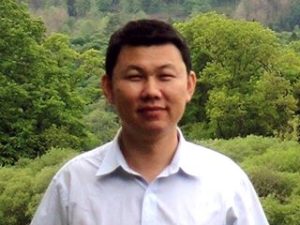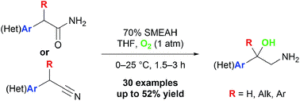We are very pleased to introduce Professor Hamdy M. Abdel-Rahman, Dr Asmaa M. AboulMagd and Mr Mostafa A. Mansour, the authors of the paper ‘Quinazoline-Schiff base conjugates: in silico study and ADMET predictions as multi-target inhibitors of coronavirus (SARS-CoV-2) proteins‘. Their article has been very well received and handpicked by our reviewers and handling editors as one of our September HOT articles. The authors told us more about the work that went into this article and what they hope to achieve in the future. You can find out more about the authors and their article below and find more HOT articles in our online collection.
Meet the authors
 Prof. Hamdy M. Abdel-Rahman received the Ph.D. degree in medicinal chemistry in 1999 in a joint supervision system between Faculty of Pharmacy Assiut University, Egypt and Kyoto Pharmaceutical University, Japan. After Two postdoctoral positions, from 2002-2004, at Kyoto Pharmaceutical University, Japan and from 2006-2009 at institute of cancer therapeutics, Bradford University, UK; he returned back to Assiut University, Egypt where he promoted to full professor in 2012. From 2014 he joined the Faculty of Pharmacy, Nahda University, Egypt, where he is the dean from 2018 till now.
Prof. Hamdy M. Abdel-Rahman received the Ph.D. degree in medicinal chemistry in 1999 in a joint supervision system between Faculty of Pharmacy Assiut University, Egypt and Kyoto Pharmaceutical University, Japan. After Two postdoctoral positions, from 2002-2004, at Kyoto Pharmaceutical University, Japan and from 2006-2009 at institute of cancer therapeutics, Bradford University, UK; he returned back to Assiut University, Egypt where he promoted to full professor in 2012. From 2014 he joined the Faculty of Pharmacy, Nahda University, Egypt, where he is the dean from 2018 till now.
Dr. Asmaa M. AboulMagd received the Ph.D. degree in pharmaceutical chemistry in 2016 from Faculty of Pharmacy, Ain Shams University. She is interested in design and synthesis of small molecules with potential biological activities and the use of computer aided drug design. Since 2017, she has been a lecturer of pharmaceutical chemistry at Faculty of Pharmacy, Nahda University, Egypt, till now.
Mr. Mostafa A. Mansour graduated from Faculty of pharmacy, Nahda University, Egypt in 2013 and received the Master degree in medicinal chemistry in 2020 from Faculty of Pharmacy, Beni-Suef University, Egypt. Interested in computer aided drug design techniques.
Could you briefly explain the focus of your article to the non-specialist (in one or two sentences only) and why it is of current interest?
The focus of this article is to find a drug for treatment of coronavirus diseases COVID-19.
How big an impact could your results potentially have?
Reaching to a therapeutic drug against coronavirus will have a social, economic, and political impact.
Could you explain the motivation behind this study?
In a previous work, we have designed and synthesized a class of synthetic compounds and were evaluated against PDE 4B activity (anti-inflammatory in chest diseases), we thought that this would be ideal pharmaceutical therapy against COVID-19 disease.
In your opinion, what are the key design considerations for your study?
The key design considerations in this study is to find out that these compounds could be used as potential therapeutic agents for COVID-19.
Which part of the work towards this paper proved to be most challenging?
COVID-19 pandemic is considered as a global health crisis of our time and the greatest challenge we have faced nowadays.
What aspect of your work are you most excited about at the moment?
Using computer modeling softwares, we proved that these compounds have a potential therapeutic effect on coronavirus by several mechanisms.
What is the next step? What work is planned?
The in-vitro evaluation of the biological activity of the synthesized derivatives is our next step in an attempt to discover a potential multi-target agent against coronavirus.
Quinazoline-Schiff base conjugates: in silico study and ADMET predictions as multi-target inhibitors of coronavirus (SARS-CoV-2) proteins
Mostafa A. Mansour, Asmaa M. AboulMagd and Hamdy M. Abdel-Rahman
RSC Adv., 2020,10, 34033-34045
DOI: 10.1039/D0RA06424F, Paper
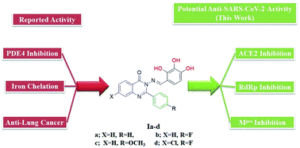
 Submit to RSC Advances today! Check out our author guidelines for information on our article types or find out more about the advantages of publishing in a Royal Society of Chemistry journal.
Submit to RSC Advances today! Check out our author guidelines for information on our article types or find out more about the advantages of publishing in a Royal Society of Chemistry journal.
Keep up to date with our latest HOT articles, Reviews, Collections & more by following us on Twitter. You can also keep informed by signing up to our E-Alerts.














